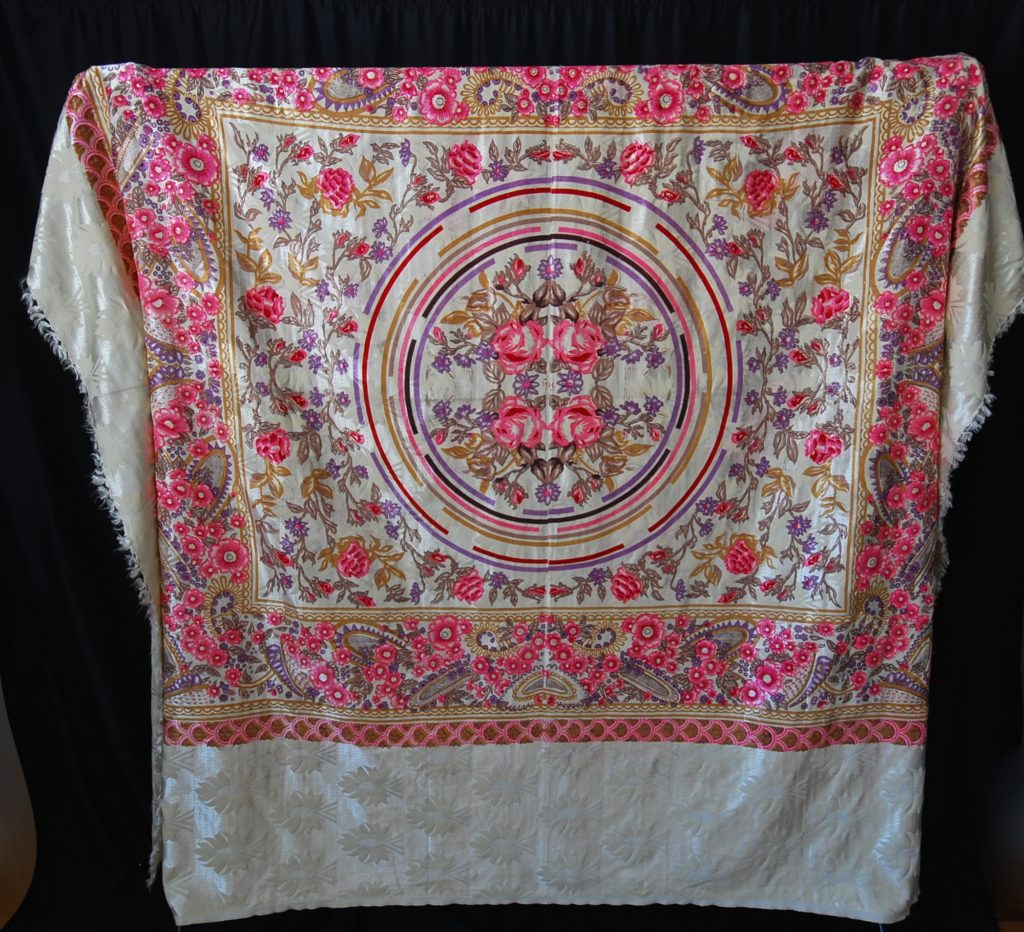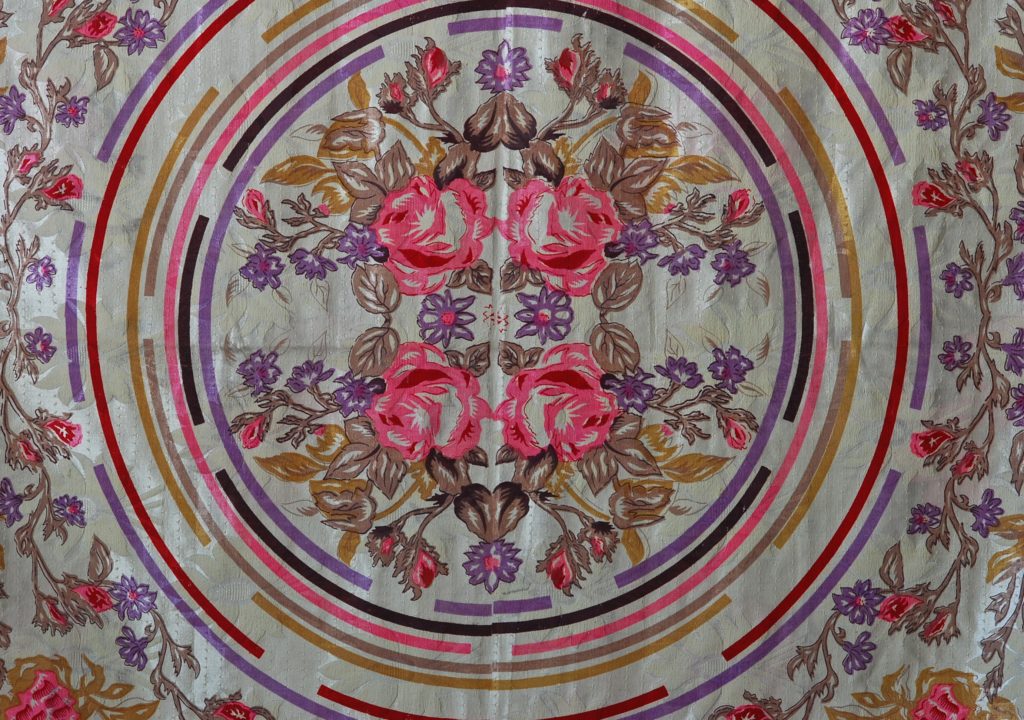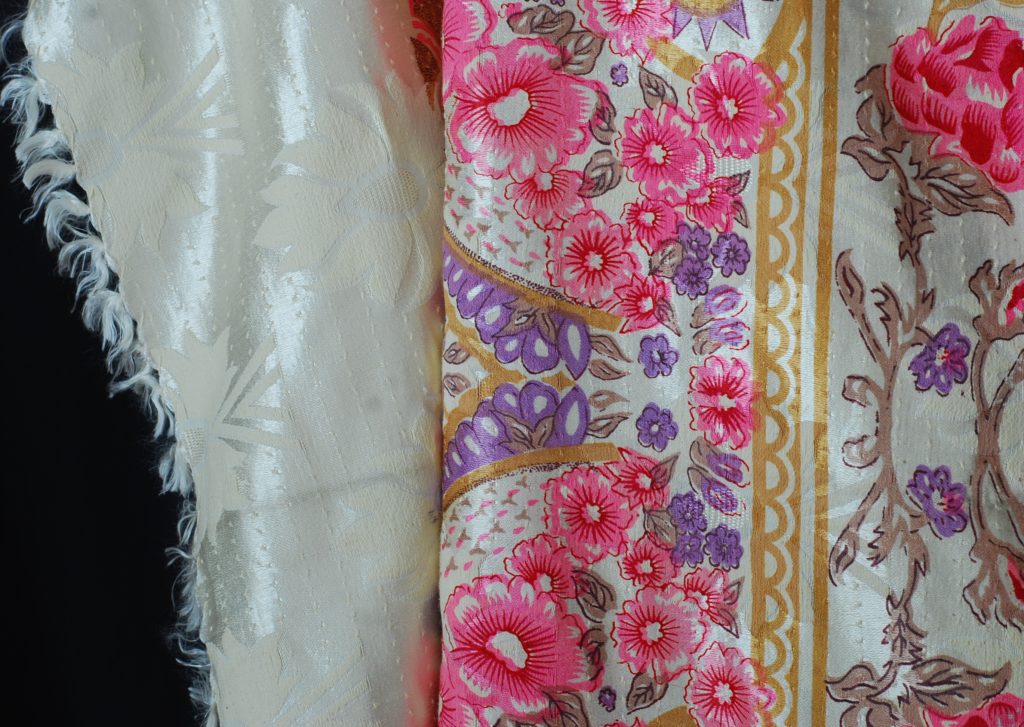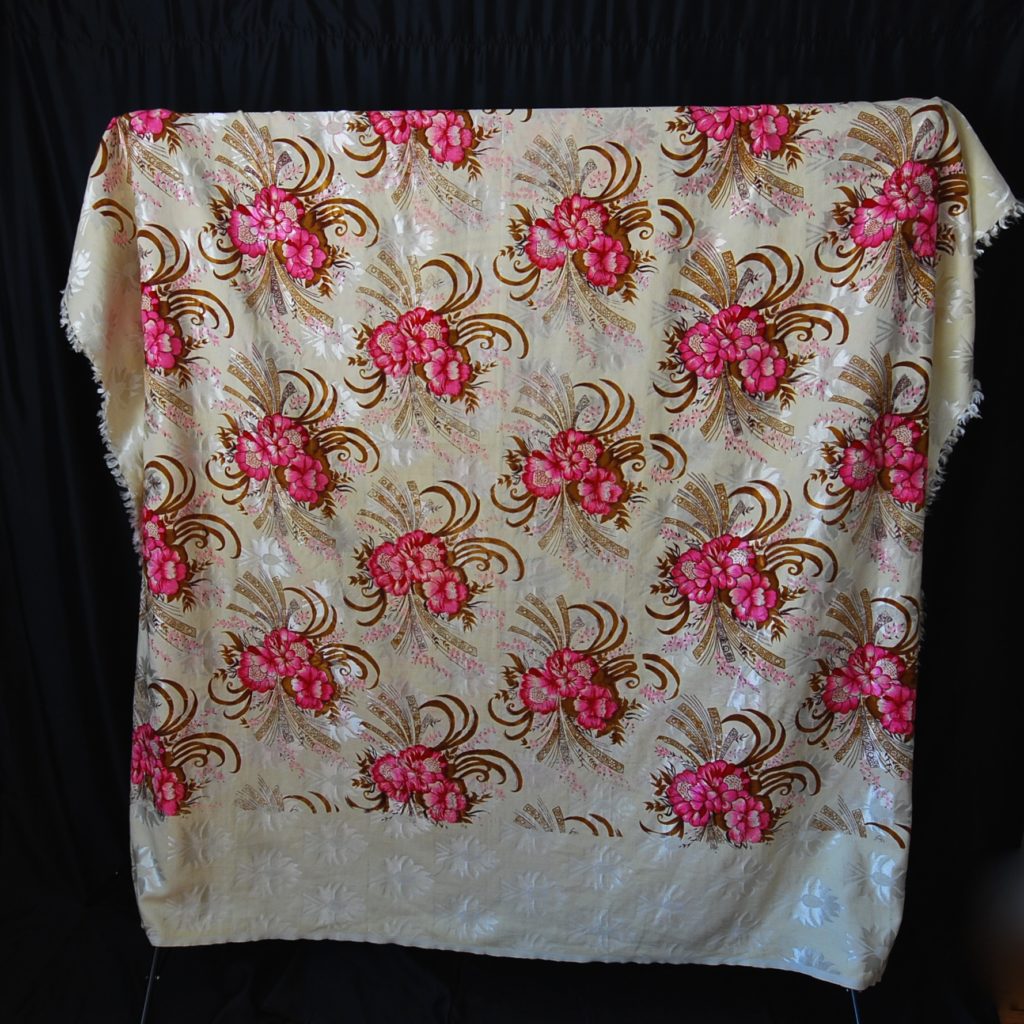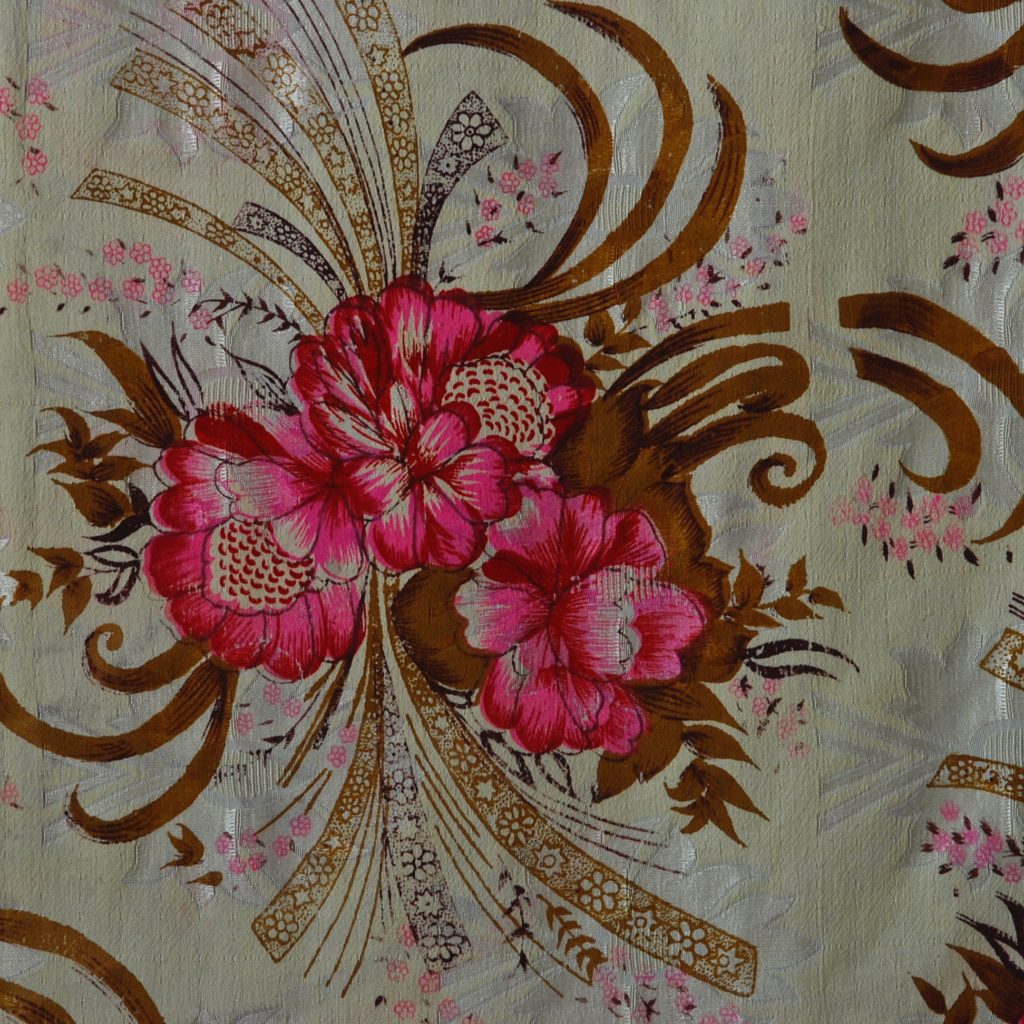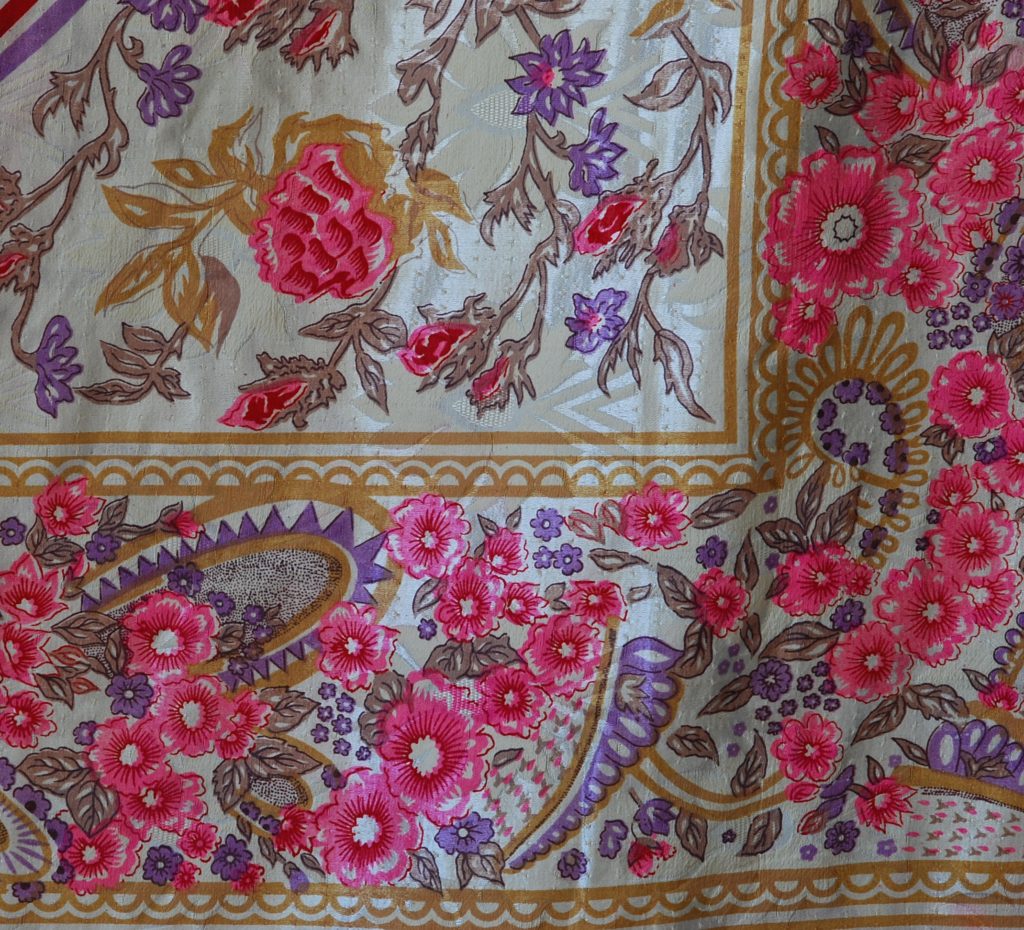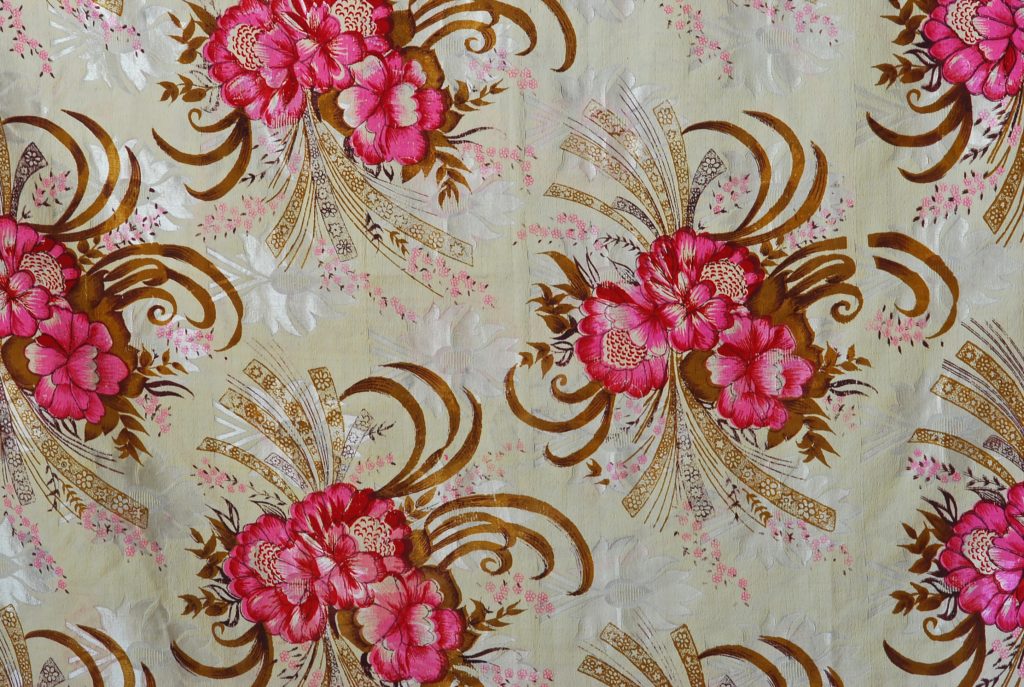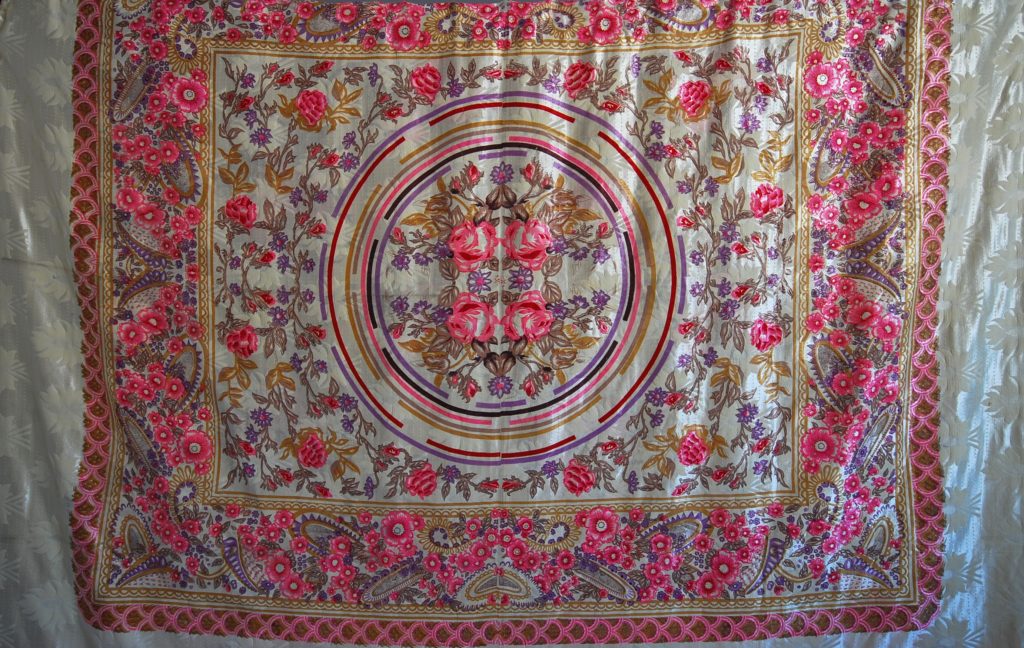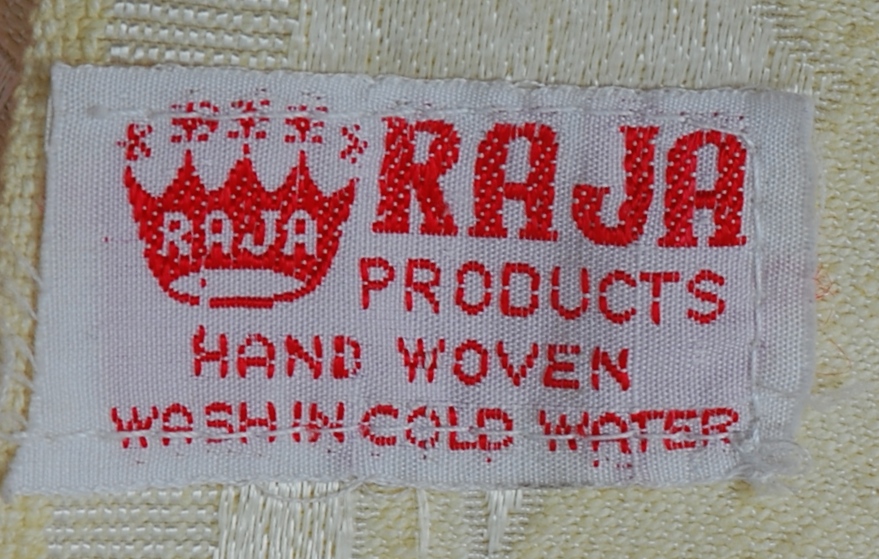A Poet’s Parallax ~ Raja Hand Woven Silk Damask Textile ~ Translated Into A Lustrous Splendor
This hand woven silk damask textile by Raja is absolutely stunning. It is very large, with an ivory backdrop, rich in depth and texture, yet vibrantly reflective. The pictures below show each side of the design, as well as some close ups. Although there are many hand woven rugs from India and Pakistan, hand woven silks, and beautiful hand embellished saris – so far, I cannot find anything comparable to this on Ebay, 1stdibs, or any of the other sites on vintage textiles. From the Antique Textile History, the following information sheds some light on the origin of such a textile, not including the selection and preparation of the silk, or colours, but enough to enhance our appreciation:
“BROCADES – THE TRADITION OF BRINGING SILK TO LIFE
Brocade weaving, especially with gold and silver, has been an age-old tradition in India. There are two broad classes of brocades. Brocades of pure silk or silk and cotton blends and zari brocades with gold and silver threads. The most important material in brocade weaving is silk. It facilitates lovely weaves, is durable, strong, fine and smooth. There are several varieties of raw silk of which the chief ones used for brocades are Tanduri, Banaka and Mukta. Tanduri is imported from Malda and other places in Bengal. Banaka is thinner and finer variety and is mostly used to weave soft fabrics such as turbans and handkerchiefs. Mukta is a coarse and durable silk used for kimkhabs, as fine silk would not withstand heavy gold patterns.”
“MAKING NAKSHAS (DESIGNS) ON BROCADES
Making of nakshas (designs) forms an important part of brocade weaving. Banaras is the main center where the nakshabandha (designer) tradition prevails. The skill and imagination of nakshabandha plays a prominent part in making of designs. Designs are associated with legends and symbolism. The most popular motifs are drawn from nature. In Banaras, it is said that nakshabandha families were brought to this country during the reign of Muhammed Tughlak (1325-1350 A.D.). They were supreme masters of the art of tying designs into the loom. Local artisans and weavers learned this art from these great craftsmen. Some of these craftsmen were also great poets-perhaps they wove their poetry into their designs. One such renowned poet was Ghias-I-Naqsband, mentioned in Abul Fazl’s ‘Ain-I-Akbari’. The nakshas are first worked on paper. This part of the work is called likhai (writing). The nakshabandha then makes a little pattern of it in a framework of cotton threads like a graph. This pattern gives guidance to the working of that design into weaving.”
The example in this post, is a much heavier silk than most. The design on one side does not show through or impact on the other side. I am guessing it was part of a special ordered bridal trousseau, and estimate it to be from the sixties or seventies. It is truly extraordinary – with many components in the design and fabric, from dimensional rose floral outlines, to small raised slubs on the fabric, and a periwinkle contrast. The centre on one side features a large round design, a bouquet, outlined in coloured lines. In the very centre, there is a small red symbol or signature. The condition is pristine. It is one of the most beautiful textiles I have ever handled and photographed. It is visually tactile, a fascinating sight to behold, with a luminescent glow and vibrant colour and synchronization. It creates an exhibit with features unique to the richly exotic and historical textile artistry from faraway lands.
It demonstrates how the non-material world – beginning with the vision of a poet or artist, can be woven into the material world – and will always retain the beauty and vision of the soul that went into it. Initially as a concept it may seem overwhelming and elusive. Eventually it turns out to be, a fine representation – of soulful materialism and poetic realism.
